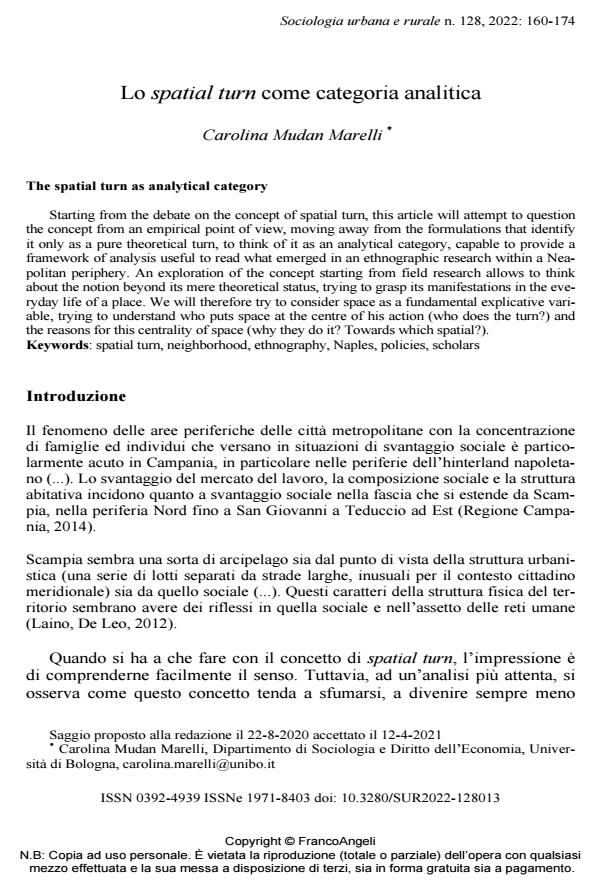The spatial turn as analytical category
Journal title SOCIOLOGIA URBANA E RURALE
Author/s Carolina Mudan Marelli
Publishing Year 2022 Issue 2022/128
Language Italian Pages 15 P. 160-174 File size 187 KB
DOI 10.3280/SUR2022-128013
DOI is like a bar code for intellectual property: to have more infomation
click here
Below, you can see the article first page
If you want to buy this article in PDF format, you can do it, following the instructions to buy download credits

FrancoAngeli is member of Publishers International Linking Association, Inc (PILA), a not-for-profit association which run the CrossRef service enabling links to and from online scholarly content.
Starting from the debate on the concept of spatial turn, this article will attempt to question the concept from an empirical point of view, moving away from the formulations that identify it only as a pure theoretical turn, to think of it as an analytical category, capable to provide a framework of analysis useful to read what emerged in an ethnographic research within a Neapolitan periphery. An exploration of the concept starting from field research allows to think about the notion beyond its mere theoretical status, trying to grasp its manifestations in the everyday life of a place. We will therefore try to consider space as a fundamental explicative variable, trying to understand who puts space at the centre of his action (who does the turn?) and the reasons for this centrality of space (why they do it? Towards which spatial?).
Keywords: spatial turn, neighborhood, ethnography, Naples, policies, scholars
Carolina Mudan Marelli, Lo spatial turn come categoria analitica in "SOCIOLOGIA URBANA E RURALE" 128/2022, pp 160-174, DOI: 10.3280/SUR2022-128013